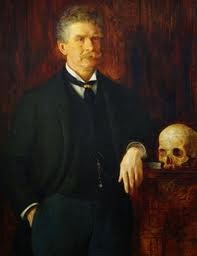Answer the following questions:
- How is “Big Two-Hearted River: Part One” different from Part Two? Why did Hemingway write them separately?
- How is Nick Adams (Hemingway Hero) a good example of characteristics of Modernism?
- For your assigned section of the story,
- write a short summary of events
- identify the key words and phrases
- identify possible symbols or metaphors Hemingway uses and what they represent.
Hemingway Literary Analysis Essay
Assignment: Write an essay in which you explain
how Nick Adams is a typical Hemingway Hero and, as such, is a representative of
the ideas of Modernism. Refer to class
handouts/questions and include examples from the short stories to support your
answer. Use specific examples from at least three short stories, including
quotations and page numbers.
Tips for writing your essay:
·
Quotations
should not float as their own, separate sentences. Embed them into your
sentences. (See the quotation example below)
·
Follow
this format for punctuation around parenthetical citations:
Hemingway shows the disillusionment
of Modernism in the setting of “Big Two-Hearted River.” When Nick arrives at
the town of Seney, he finds “no town, nothing but the rails and the burned-over
country” (133).
·
Write
in PRESENT TENSE, not past. (See the quotation example above)
·
Refer
to the author by his full name or last name only. You may refer to characters
within the text by first name only.
·
Do
not use first-person (I, me, we, us) or second-person (you) pronouns in your
essay. Use only third-person pronouns (he, she, they, one).
Essay must be submitted to turnitin.com by 11:59:59pm on Tuesday, April 8.
Structure of the Essay:
I.
Introduction
A.
Attention-getter. (Hook the reader, reel them in. See what I did
there? It’s a fishing metaphor)
B.
Thesis. Include the author’s full name and the title of the book.
Example: In his
collection of short stories In Our Time,
Ernest Hemingway develops Nick Adams as the typical Hemingway Hero.
C.
Preview (Three) Main Points.
II.
Body of Essay
A.
Paragraph 2 – First Characteristic of Hemingway Hero
1.
Explain the characteristic AND how it reflects ideas of
Modernism.
2.
Example from one story (including quotation and page number).
Analyze
how quotation demonstrates the characteristic.
3.
Example from second story (including quotation and page
number). Analyze how quotation
demonstrates the characteristic.
B.
Paragraph 3 – Second Characteristic of Hemingway Hero
1.
Explain the characteristic AND how it reflects ideas of
Modernism.
2.
Example from one story (including quotation and page number).
Analyze how quotation demonstrates the
characteristic.
3.
Example from second story (including quotation and page
number).
Analyze how quotation demonstrates the characteristic.
C.
Paragraph 4 – Third Characteristic of Hemingway Hero
1.
Explain the characteristic AND how it reflects ideas of
Modernism.
2.
Example from one story (including quotation and page number).
Analyze how quotation demonstrates the characteristic.









